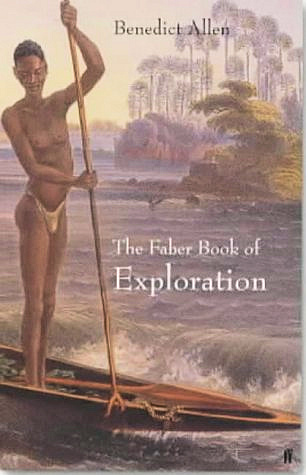 On one level, Benedict Allen has compiled an impressive volume of accounts of exploration throughout history that can be enjoyed as heroic adventures and tales of “derring-do”. But I can’t help feeling depressed as I read story after story of exploitation, greed, cruelty and murder, often carried out in the name of “civilisation” or religion.
On one level, Benedict Allen has compiled an impressive volume of accounts of exploration throughout history that can be enjoyed as heroic adventures and tales of “derring-do”. But I can’t help feeling depressed as I read story after story of exploitation, greed, cruelty and murder, often carried out in the name of “civilisation” or religion.
Allen’s book is big – 773 pages plus a 23-page introduction – and contains 144 extracts from the writings of explorers from Herodotus to the present day. Allen has arranged these into six sections: seas and landfalls, plains and foothills, hot deserts, cold deserts, forests, and mountains. Within each section he presents the pieces in roughly chronological order. Each section is prefaced with an extended editorial in which Allen sets the context for what follows, and each extract has its own editorial introduction. Inevitably, the choice of section in which to place an extract sometimes has to be arbitrary: there are, after all, many hot desert plains and forested mountains in the world.
In his introduction Allen asks the obvious questions of what defines an explorer, and why do people do it. He finds that everyone he asks (Ranulph Feinnes, Chris Bonington, Robin Hanbury-Tenison, etc.) gives an answer that reflects their own interest or obsession (Allen calls it their “field of endeavour”). He declares his own interest, as a writer, and suggests that exploration is about pushing back a frontier of knowledge, either mental or physical. Crucial to the process is the reporting back of that new information. The explorer is distinguished from the mere traveller by his journey being more than one of personal discovery.
As to why, Allen suggests that a desire to discover is intrinsic to human nature and is one factor that contributes to the success of the human species. But whatever favoured the survival of the primitive hunter-gatherers, the sad fact is – as Allen acknowledges – that much of what we regard as ‘Great Exploration’ was motivated by greed, commercial gain, or personal glory. Even when the 18th century Enlightenment legitimised exploration in the name of science, these baser motives were usually still present. After all, even today, scientists need funding, status, and recognition, not to mention lucrative book and TV/film deals. Even explorers have to make a living.
Allen acknowledges the other obvious problems with trying to make any balanced selection of material. Virtually all the accounts were written by the explorers: almost never do we get to hear the thoughts of the explored, although a notable exception is the extract from My People the Sioux (1928) by Luther Standing Bear. Although there have been a few redoubtable women explorers, they are inevitably swamped by the vastly more numerous men. Those women whose accounts we do have, and who are represented here, often stand out for the quality of their writing and their perceptiveness about their surroundings and other cultures. Isabella Bird in the American west, Mildred Cable and Francesca French in the Gobi Desert, or Sara Wheeler in Antarctica are good examples. Allen even picks out a feature of Wheeler’s account which I mentioned in my own review written two years earlier, the fact that “she chooses hardly to describe the polar landscape at all”, but that her exploration is of “the Antarctic now colonized and defined by men.” (No acknowledgement, though!)
Among Allen’s sources there is a smattering of those who in the light of historical hindsight and scholarship are now seen to have been rather more inventive than objectively accurate in their accounts. He gives an intriguing account (p441 ff) of the intense battle between Peary and Cook to be recognised as the first to reach the North Pole, which, in the prevailing spirit of exploration, was a circulation battle between their rival newspaper sponsors. Cook lost the contest and was discredited as not having reached the Pole, and the honours went to Peary. However, recent research based on Peary’s own journals, only finally made available in 1984, shows that it is highly unlikely he reached the Pole either.
In the same vein, Allen quotes J.D.F. Jones’ biography of Laurens van der Post: “Time after time, the storyteller’s tales about himself were inaccurate, embellished, exaggerated, distorted or invented. Put more bluntly, he was a constant liar.” According to Jones, “almost all the tales supposedly told him [van der Post] in the Kalahari [by the San bushmen] were in fact drawn from the research of the nineteenth-century scholar Dr Wilhelm Bleek.” Other examples of what now seem, at best, to be dubious claims of authenticity or achievement occur sporadically through the book.
Nevertheless, Allen’s achievement in putting this book together – which took him twelve years’ research – is impressive. The coverage is comprehensive and Allen’s editorial contributions, although inevitably reflecting his own attitudes, do serve their purpose of putting the extracts in context. It is probably a book to dip into rather than read from cover to cover, but one which stands a lot of dipping and which can be enjoyed more than once.
Overall verdict: As much a history of power as of exploration
Faber & Faber, 1999
